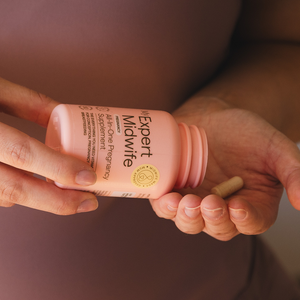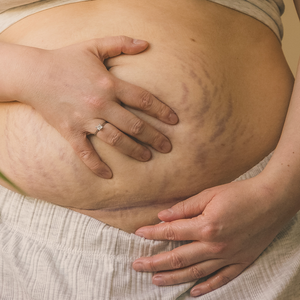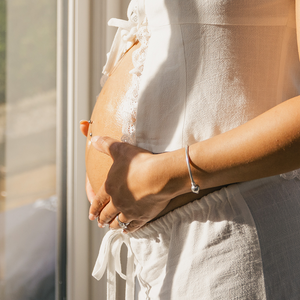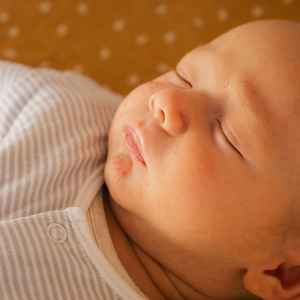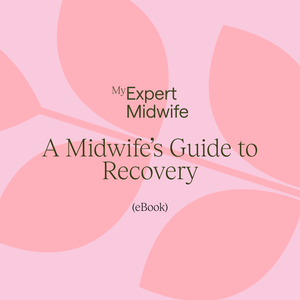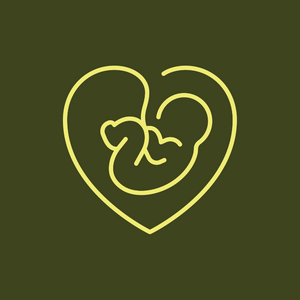The healing process begins as soon as you leave the theatre but can take up to 2 years to heal on a cellular level. Scar tissue forms as your body lays healing fibres down to repair your skin, fat, muscle and uterus.
Scar tissue may adhere to other tissues during the healing process, creating adhesions. These are bands of scar tissue that can tighten and constrain internal tissues. These are most common on the colon, ovaries or between your bladder and uterus.
Types of C-Section Scar Incisions
There are various types of Caesarean section incisions, and the most significant factor in how your scar looks is due to the kind of scar incision you have. The doctor performs two incisions - the first is through the abdomen, and the other is through the uterus. They will be different, but there two types of incisions on your abdomen are:
Transverse c-section scar
This type of scar is the most common and standard practice for obstetricians (OBs) to perform. It is around 4-5 inches long and is underneath your underwear line, so it looks better cosmetically. It is also less likely to rupture later during pregnancies, especially if you have a vaginal birth.
Vertical c-section scar
This is also known as a classical c-section and is a vertical incision 4-5 inches up and down. It is more commonly used for emergency c-sections and to access pre-term babies. If any complications occur during pregnancy where a hysterectomy needs to be done simultaneously, the vertical cut makes the procedure easier.
Types of C-Section Scars
While caesarean scars heal and fade gradually over time for some women, some scars are more stubborn.
Keloid Scar
This type of scar extends beyond the scar tissue of the c-section, resulting in lumps around the scar incision.
Hypertrophic c-section scar
This scar becomes thick and hard but doesn't go out of the edges of the original scar line. It's more raised than a typical scar. You can use silicone sheets or strips, which might help heal hypertrophic scars.
C-Section Scar Healing Stages
Healing takes time and occurs in 4 stages. During surgery, your abdomen is cut, your wound is repaired, and healing commences. Here are the stages of the healing process:
1. Haemostasis
This is the first stage where clotting factors in your blood stop the bleeding.
2. Inflammation stage
This is the second stage and is where the scabbing over and clearing away of toxins and infections.
3. Proliferation stage
The third phase is the rebuilding stage, and this is when you can benefit the most from massaging your scar. Once healed and formed, it can feel itchy and sensitive as the nerve endings within the tissue are actively healing. It may feel numb in places or tingly to the touch, or even painful if pressed on. It still looks red at this point but does fade over time to normal skin tone.
4. Maturation stage
The fourth phase is when the scar strengthens. Your body can still be forming scar tissue for more than a year after your C-Section. When the body is no longer producing scar tissue, the scar is considered mature. Even at this point, massaging can still be beneficial.
How long does it take for a C-section scar to heal?
It usually takes about six weeks for your scar to heal before resuming normal daily activities without disturbing it. Give yourself six weeks for the healed c-section scar to strengthen so that it can endure when you do heavy activities. It may turn a reddish-purplish colour which can last for up to six months and then fade to a white colour.
How can you help a C-section scar to heal?
There are several ways you can help a c-section scar heal. Think of this as vital body maintenance that you need to carry out regularly to optimise your health and wellbeing, both now and in the years ahead.
- Pain medication - When you leave the OB's office, you may have received some pain medication to help you through the first few weeks. You can also try ibuprofen and acetaminophen for over the counter pain relief
- Eat healthy food - eating a healthy diet rich in vitamins and nutrients is beneficial for your body in healing scars
- Wear compression trousers - Compression can help stabilise your sore midsection
- Keep the scar area clean - change your bandage if it gets wet or dry and swap it at least once a day to prevent infection
- Use Bath Salts - You can also use our Soak for Bits which contains Epsom salts to help relax the deep muscle fibres before your massage
- Do a Scar massage - Effective at releasing scar tissue and increasing mobility in your lower abdomen. Dedicating at least 5 minutes two times a day can produce faster results. You can use a C-section scar cream or our Super Scar Recovery Oil to minimise scar appearances, soften and soothe scar tissue through massage, and help you recover better
- Laser therapy - an option for more effective non surgical procedures, as lasers can remove discolouration and help soften the texture. Check with your OB or consult a plastic surgeon

Remember that your body has done a fantastic thing and birthed a baby whilst undergoing major surgery. Your scar is a badge of honour to your stamina and strength, and you need to nurture and care for this part of your body. Discuss the scar with your little ones if they are curious and tell them the story of your scar – so many of us birth this way now. Nearly 3 in 10 births in the UK are C-sections. Be proud of your body and scar; treat it well to feel healed, healthy and happy in the years after your birth.
